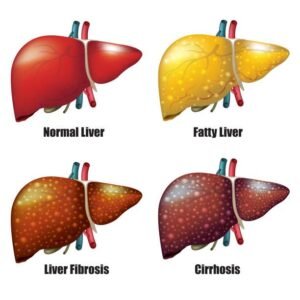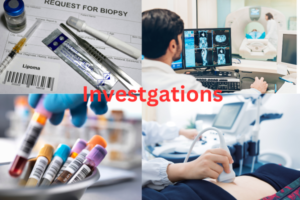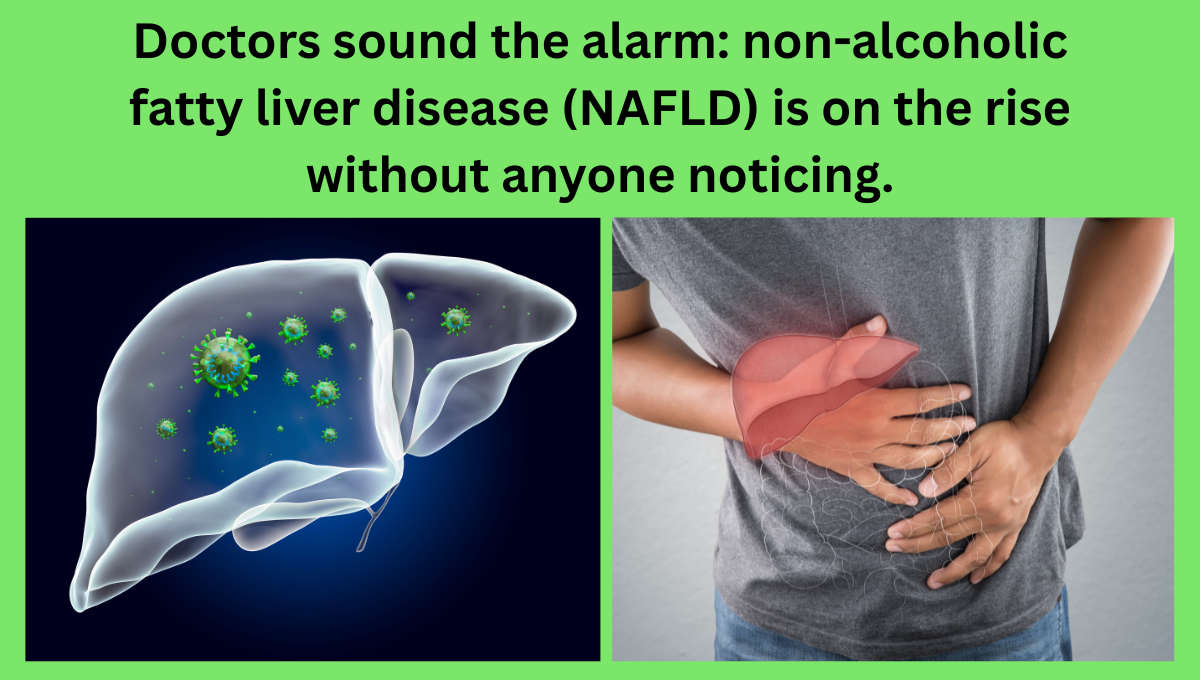Doctors warn that non-alcoholic fatty liver disease (NAFLD) is increasing without anyone noticing.
 How to Explain the Rise in Cases of Non-Alcoholic Fatty Liver Disease
How to Explain the Rise in Cases of Non-Alcoholic Fatty Liver Disease
Non-alcoholic fatty liver disease (NAFLD) has become a big public health issue around the world in the past few years. About one-third of people have this condition, which was once thought to be harmless but is now linked to serious health risks like liver cirrhosis, heart disease, and type 2 diabetes.
NAFLD happens to people who don’t drink much or any alcohol, unlike liver diseases linked to heavy alcohol use. It’s mostly caused by unhealthy habits like being inactive, eating poorly, and the rising number of obese people. This sneaky disease often spreads without any or few signs until it’s well advanced, which is why experts call it a “silent epidemic.”
What is NAFLD, and why is it bad?
NAFLD is a group of liver diseases that people who don’t drink much or any alcohol can get. The main sign is having too much fat stored in liver cells. There are mainly two kinds:
Steatosis is when the liver has fat but no inflammation or damage to liver cells.
Non-alcoholic steatohepatitis (NASH) is a more serious type that causes damage and inflammation to the liver, which can lead to scarring (fibrosis) and eventually cirrhosis or liver cancer.
NASH is particularly dangerous because it can occur without any symptoms and harm the liver irreversibly over time.
The scary rise in NAFLD around the world
A new study indicates that the number of people with NAFLD has increased sharply around the world. The trend is similar to the rise in obesity and metabolic syndrome. Some important numbers are
NAFLD is believed to affect 25–30% of people worldwide.
People who are overweight or have type 2 diabetes are even more likely to have it—up to 75% of those studied.
NAFLD is now the main cause of chronic liver disease in many places.
 What Really Caused the NAFLD Explosion
What Really Caused the NAFLD Explosion
NAFLD doesn’t happen by itself. It’s usually linked to a group of biochemical and lifestyle problems:
1. Not eating well Full of fats and sugars
When you eat many refined carbohydrates, extra sugars (especially fructose), and trans fats, your liver stores more fat.
2. Living a sedentary life
Insulin resistance, a major cause of NAFLD, is directly linked to not being active. Not exercising enough makes people fat and makes fat buildup in the liver worse.
3. Metabolic Syndrome and Being Overweight
Abdominal fat, high triglycerides, low HDL cholesterol, and high blood sugar constitute metabolic syndrome. NAFLD is closely linked to all of these conditions.
4. Diabetes Type 2
High blood sugar and insulin resistance make the liver fatter and more inflamed. Studies show that up to 70% of people with type 2 diabetes also have NAFLD.
Signs of NAFLD: Why it’s Hard to Catch Early
One of the hardest things about NAFLD is that it doesn’t show any symptoms at first. When signs do show up, they might be:
Weakness
Pain in the upper right abdomen
In its later stages, mild jaundice
Weight loss for no reason
Feet or legs getting swollen
During routine check-ups for other problems, blood tests or imaging studies often find the condition by mistake.
 How doctors figure out if someone has NAFLD
How doctors figure out if someone has NAFLD
Doctors use several tools to find NAFLD and figure out how serious the liver damage is:
ALT and AST levels that are too high in the blood may be a sign of disease in the liver.
Imaging tests like ultrasounds and MRIs can help find fat buildup in the liver.
FibroScan is a non-invasive tool used to check for fibrosis and stiffness in the liver.
Sometimes, a liver biopsy is required to confirm NASH and assess for scarring.
NAFLD Problems: It’s Not Just the Liver
NAFLD raises the chance of serious problems that can kill you that aren’t related to the liver:
Heart and blood vessel diseases are the main reason people with NAFLD die.
The liver can stop functioning due to liver cirrhosis, which leaves behind unremovable scars.
Hepatocellular carcinoma is a type of liver cancer that is more common in people with NASH.
Studies have found a strong link between NAFLD and kidney failure in people who have chronic kidney disease.
How to Fix NAFLD: Changes in Lifestyle That Save Lives
What’s the good news? In its early stages, NAFLD can be reversed without medicine by introducing changes to how you live your life:
1. Losing weight
Losing 7–10% of your body weight can cut fat and inflammation in the liver by a lot.

How to Eat Well
Follow a Mediterranean-style diet that is full of
Full-grains
Leafy greens and fruits and veggies
Fish and other lean foods
Olive oil, nuts, and seeds
Sugars and prepared foods should be limited.
3. Doing regular things
Your goal should be to do 150 minutes of mild aerobic exercise every week. You can choose to walk, run, or ride a bike.
4. Keep your cholesterol and blood sugar in check
Taking care of diabetes and high cholesterol lowers the risk of liver damage.
5. Don’t take medicines you don’t need.
Some medicines can make liver stress worse. Talk to your doctor all the time.
New treatments and ongoing studies
There aren’t any official drugs approved for NAFLD, but researchers are working on some very hopeful treatments:
GLP-1 receptor agonists, such as semaglutide, may help people lose weight and cut down on liver fat.
Some people are receiving extra vitamin E.
People who have type 2 diabetes may benefit from pioglitazone.
Clinical studies are currently testing new drug therapies, liver-targeting anti-inflammatories, and gut microbiota modulators.
NAFLD in kids: a growing danger
Sadly, the number of kids with NAFLD is growing due to the increasing rates of childhood obesity. Kids with NAFLD are more likely to get diabetes, heart disease, and advanced liver diseases over the course of their lives. From a young age, parents and other adults who care for kids need to encourage them to eat well, be active, and spend less time in front of screens.
Why We Need to Act Now: A Call to Warn Others and Stop It
Ignoring NAFLD is the same as letting an invisible disease keep growing. We can greatly lower the number of diseases that will affect future generations by spreading information, supporting preventive care, and pushing for early screening.
Now is the time to take care of your liver.
We must take action while NAFLD silently affects millions of livers worldwide. There is a lot of proof that changing your lifestyle is the best way to treat this problem, and raising knowledge is our most powerful tool. Early detection and treatment of NAFLD increases the likelihood of repairing liver damage and preventing life-threatening effects.

